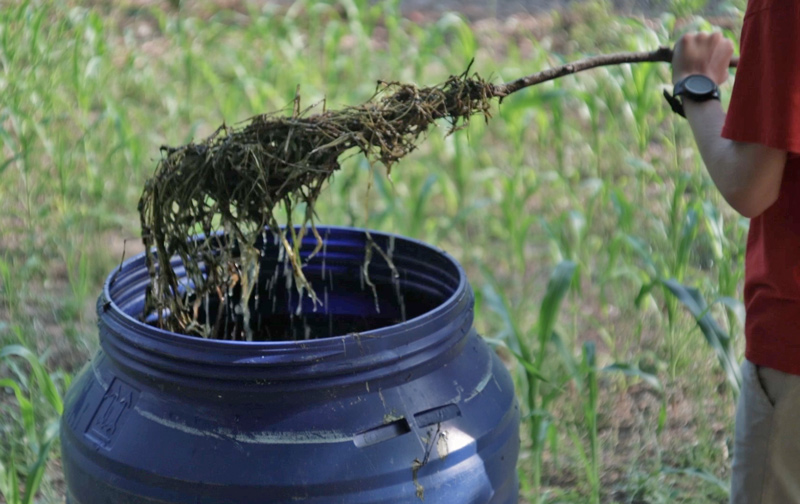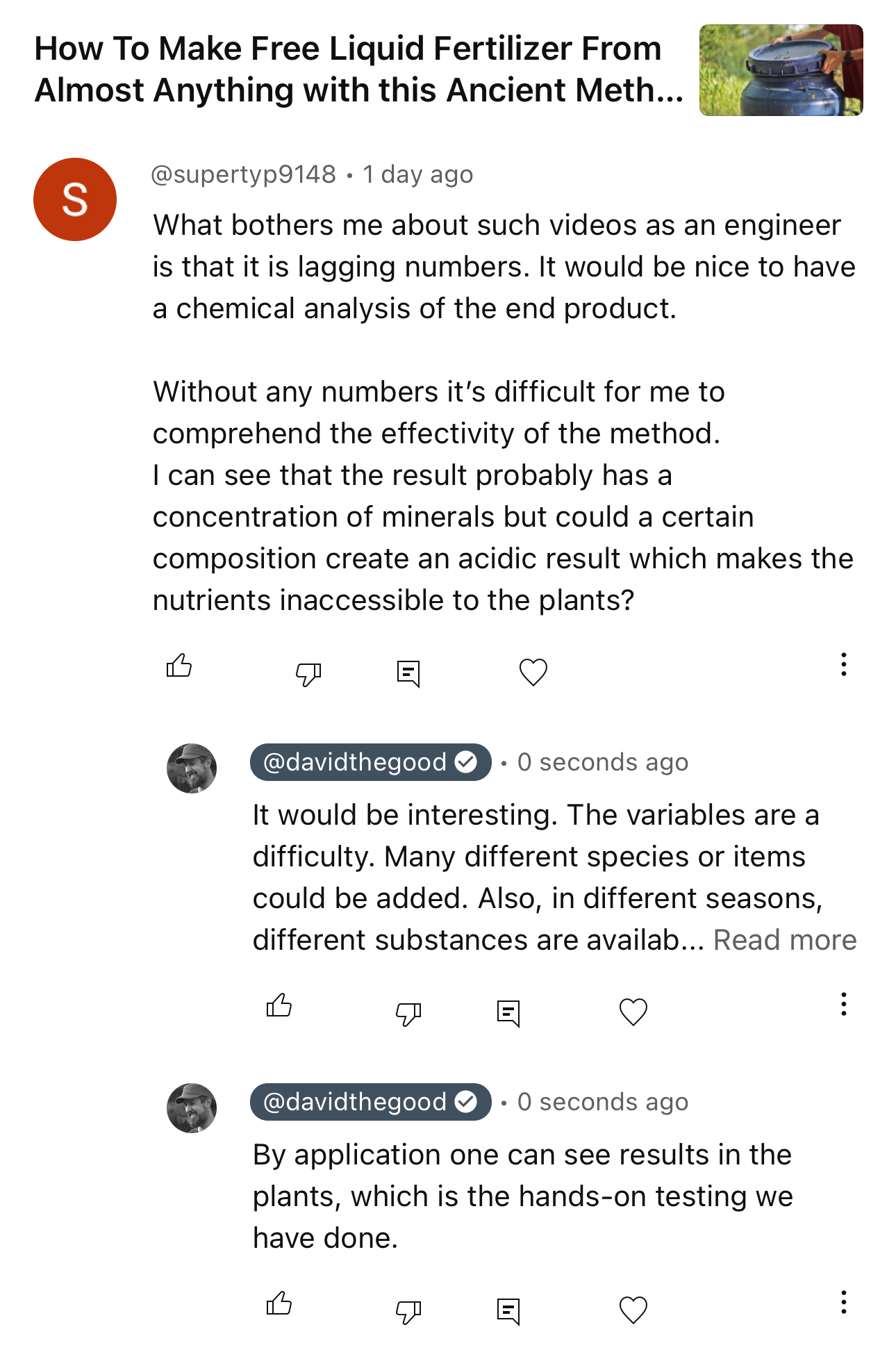I’ve been asked many times about the relative mineral content of “Dave’s fetid swamp water.” Yet it’s difficult to determine the exact concentration of minerals in it.
The main problem is that it all depends on what you first put into your swamp water. If you start with grass or manure or dead fish or all of the above, it will determine the end result. Not only that, different plants contain different amounts of minerals and they contain different amounts of minerals at different times of the year.
If you’ve raised grazing animals you know that spring grass is full of nitrogen, but fall grass is better roughage than feed as it’s mainly carbon. Getting a scientific analysis of one batch of swamp water doesn’t tell you what any other given batch of swamp water has in it. That is going to depend on the plant species you add along with whatever other ingredients you throw in. It may also depend on how long the concoction rots down.
Here’s a recent comment I received on YouTube and my response.
Someone once did repeated pH analyses of fetid swamp water and found that the pH swung from acid to base to acid to base over time. I don’t remember how it ended up, but it certainly changed quite a bit as the months passed.
The proof of the pudding is in the results you get in your garden. If you make a strong batch with kudzu and chicken manure and some dead fish and then ask me, “how do you dilute swamp water?” I don’t know.
I can’t tell you. I can make a guess if you tell me what you put in it, but if you just ask about swamp water in general and how to dilute it, that varies by how much material you put into it to begin with and what material you used.
If you make a strong batch with a lot of nitrogen in it, you may dilute it 50 parts to one. If all you did was put in some green grass and let it rot down for a few weeks, you might just put it on your garden straight.
When you have a lot of variables, it is difficult to get reproducible scientific results. Our experience with Swampwater has given us a general idea of how we should use it based on the results we see in our backyard gardens. It may be more art than science. However, your plants will tell you if it is too strong and they won’t tell you anything if it’s too weak!
If you apply swamp water and nothing happens, it’s probably too weak. If you apply swamp water and your plants burn and die, it was too strong. It is a free garden amendment anyone could make with just about any organic material that has some nutrients in it. However, you’ll have to play with it and see what you learn.
Over time, you’ll figure it out. Compost everything!
Come join the new Survival Gardener community for answers to all your gardening questions –


